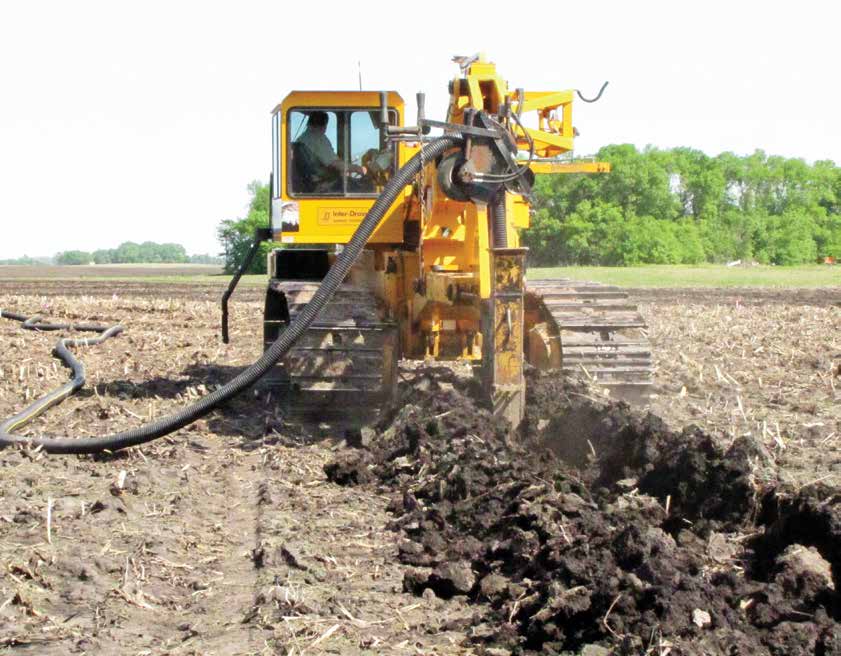
Most people associate excavation with large construction equipment digging giant trenches or big holes. But there are many “small digs” that are performed every day and despite the small size, these excavations still pose a threat to safety.
It is vitally important that workers and homeowners engaged in these activities are aware of the hazards that digging poses. Some buried facilities are just inches below the surface and care is required when digging any type of hole. It is also important to note that, quite often, these small dig projects are located on property that is beyond the scope of 811 and may require a private utility locator to identify the location of buried utilities
Digging in Your Backyard
Everyone knows improvements to your property increase your home’s value, as well as its curb appeal. Property improvements are a way of life for many homeowners, but failing to mark buried utilities before engaging in any small dig project could result in vital damage to plumbing, sewer, electric, cable, gas, oil, and water lines. Often the damage incurred affects not only the homeowner, but entire neighborhoods.
Imagine…
– cutting the cable line for the entire neighborhood on Super Bowl Sunday
– severing a phone line that means 911 cannot be reached for a neighbor in cardiac distress
– damaging a water line that allows impurities to contaminate the drinking water
– piercing a gas line that causes an explosion, killing someone
These seem like really big prices to pay when they can be avoided simply by making a call.
Small dig home excavation includes projects like pool building, mailbox installation, landscaping, fence installation, and deck building, but any project that involved ground disturbance of any kind should be preceded by a call to 811.
Farming… or Excavating?
Farming activities increasingly pose a risk to pipelines. Farm equipment is getting more powerful and can dig deeper. Compounding the problem, erosion and soil terrain modifications can reduce the soil covering an underground pipeline or cause the pipeline to shift.
Many activities farmers assume are regular farming activities are actually defined as excavating and require a call to 811, including:
– Fence building
– Drain tiling
– Terracing
– Grading
– Contouring
– Ripping
– Deep tilling
– Building or repairing roads
– Tree or stump removal
– Deep soil sampling
– Clearing or grubbing
– Grading
– Ditch cleaning
– Trenching
– Augering
– Burying livestock
– Installing cattle guards, dams or dugout
This list is not comprehensive. When in doubt, always contact your local One Call. “Normal” farming activities are limited to things like plowing, planting, cultivating, and harvesting, as long as these activities occur at depths no greater than 12” typically, although state laws vary.
Fence Installation
While many believe contacting 811 is only for large-scale digging, safe dig laws require a locate request prior to any digging activities, including those activities associated with the installation of fencing:
– use of a post hole digger
– driving form pins
– digging shallow holes with a hand shovel
– removing old fencing or trees
Calling 811 is the law but beyond that, having utilities marked helps plan the job appropriately, dig safely around these facilities and avoid costly project delays, utility damages and potential fines.
Tent Rentals
Putting up a tent for a backyard party seems like a pretty simple process. It seldom occurs to people that it would require contacting 811. The truth is, a tent stake can be driven into the ground as deeply as three feet. At this depth, there is the potential for impacting and damaging a buried utility. For this reason, tent builders are required by law to locate buried facilities before installing a tent.

Trail Builders
Trail builders often have a unique excavation situation. The issues they encounter differ from major excavations because of their locale and environment. Often there is the perception that there are no utilities buried in the “middle of nowhere” or that grading a trail is not digging, and therefore doesn’t require excavation safety precautions. Further complicating matters, facilities in forests or remote areas are often unmarked. Even if the location the facility was buried is known, it may be closer to the surface due to erosion and shifting.
Imagine the difficulty of trying to explain to the One Call center where you are when you are standing in the middle of a forest. Rural and natural environments cannot be described as easily as urban or suburban locales that can be easily identified as “the corner of 4th and Oak Street.”
Many trail builders now use Global Positioning Systems (GPS) to report their location and may be required to meet the facility locator and escort them to the areas where the work will be performed.
If You Hit a Buried Utility
Regardless of the project you are working on, if you hit a buried utility, immediately stop work, secure the area, call 911, call the utility, and do not resume work until you are given clearance to do so. Even if you do not see any visible damage to the buried facility, it is important to report it as even a small dent or scratch can compromise the long-term integrity of the pipe or cable.
Call 811 for Every Dig Project
Even if you believe you know where utilities are located and even if you have called before, the One Call center must be contacted with every project; erosion may reduce the depth of the facility and lines often shift over time. Whether digging in the backyard or the “back forty,” it is important to realize that there is ALWAYS the possibility that facilities lie beneath the surface.
